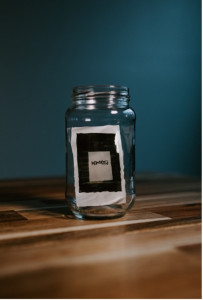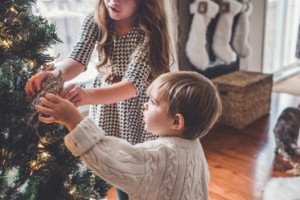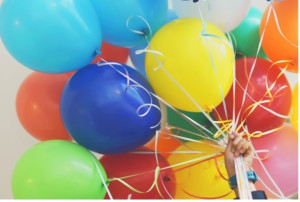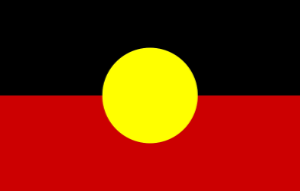Christmas Hopes & Wishes – A Time to give Thanks
Acknowledging Difference
Religious celebrations of many faiths are an important part of the Australian summer calendar. They always have been, and hopefully always will be. The joyful anticipation of those wonderful, long summer holidays usually helps teachers and students endure the final weeks of term, but this year, and the one before, feelings as the school year comes to an end are different.
 Being at home, and out of the school setting, are certainly not a novelty – lock downs in the second year of a pandemic have become so familiar that the virus and all it entails are now part of the fabric of our lives.
Being at home, and out of the school setting, are certainly not a novelty – lock downs in the second year of a pandemic have become so familiar that the virus and all it entails are now part of the fabric of our lives.
Gone is the wild rush out the school gate on the last day of term, gone are the war whoops as school bags are thrown inside the front door, followed by the rapid change from school uniform into shorts and T-shirts or swimming costumes. The end of term this year is more subdued for many, despite the welcome easing of social restrictions.
Some children, like their parents, are experiencing mixed feelings – excitement about being able to see friends and extended family members, coupled with anxiety about a resurgence of the Covid-19 pandemic and the possibility of renewed restrictions and lock downs.
Acknowledging Tough Times
The past two years have been tough and some folk of all ages have found extended lock downs particularly difficult. Loneliness, physical and mental illness, financial difficulties, and abuse of all kinds have left their physical and mental scars. Even those of us living in relatively privileged circumstances have experienced a few symbolic scars and abrasions.
Hope and Wishes
I know that some people have experienced feelings of hopelessness during the year, while others have kept hope alive, perhaps with a little less energy than in previous years. Most of us have thought or expressed wishes at different times and I find myself wondering whether there might be value in making those hopes and wishes a part of our festive decorations?

If every family filled a jar with messages that expressed hopes and wishes, my guess is that some would read “I wish this pandemic had never happened”, or “I wish someone would find a cure for all the people who become Covid positive”, or “I hope 2022 will be a year without lock downs or many restrictions”. Some messages might also say “I hope everyone continues to wear masks and wash their hands” or “I hope people will listen to the doctors and other scientists when they give us advice about safe health practices”.
Most of us will be cautiously hopeful of a new year liberally sprinkled with magic moments – belly laughs, happy surprises, feeling valued, knowing we’re loved, achieving goals, and the joy of simple things.
I hope nature is kind to us this year and next – that we are spared the horror of raging bush fires or devastating floods so we are able to enjoy the beauty of our unique scenery and our native birds and animals.
You may have lots of different hopes and wishes to add to your family jar, perhaps filling it to overflowing. Tucked into the wish and hope jar in every privileged home, I hope there is a wish that is ‘other centered’ – that we are all able to make a valuable contribution to life and to the lives of folk living with emotional, physical, or financial pain. I hope we can stimulate smiles and warm someone’s heart every day.
DECKING THE HALLS AND DECORATING THE TREE
A Time to Give Thanks
 No matter what our religious or philosophical beliefs we could all decorate a ‘Tree Of Life’. I’m imagining a tree covered in brightly coloured balloons, all containing messages of thanksgiving.
No matter what our religious or philosophical beliefs we could all decorate a ‘Tree Of Life’. I’m imagining a tree covered in brightly coloured balloons, all containing messages of thanksgiving.
In the worst of times this year it might have been easy to become paranoid about the air that we breathe, fearing that taking a deep breath might inflict us with the wretched Covid virus. Blowing up balloons for decoration could provide us with an opportunity to change fearful thinking into something positive, particularly for young children who take their cues about living from us. We need to demonstrate that air is our life support and we can all contribute to increasing its quality.

I’ve started making a list of the messages of thanksgiving I’ll be placing in my balloons, and I’ll share them with you to stimulate your own creative thinking. As I write, I’m imagining adults and children doing this together, reading their messages out loud, especially when the messages contain compliments that might warm a family member’s heart.
My list:
• I’m thankful for the care my husband has given me this year, particularly when I was recovering from cancer surgery
• I’m thankful for the love of my immediate and large extended family
• I’m thankful for the invaluable contributions friends make to my life
• I’m thankful for the privilege of working with a team of very special colleagues
• I’m thankful for the beauty of nature
• I’m thankful for the time of reflection that lock downs have provided
• I’m thankful for the unconditional love and companionship my dog Saffi gives me every day
• I’m thankful for the deep conversations I share with my husband, my family, my friends and colleagues
• I’m thankful I have been able to work in a way that allows me to express who I am
• I’m thankful for the trust people have placed in me
• I’m thankful that I can still see and hear (impaired, but…)
• I’m thankful that I can still walk and take care of myself
• I’m thankful for the wonderful doctors who have enabled me to live a long and full life
• I am thankful that my parents taught me to love
• I am thankful for my genetic inheritance
• I am thankful that I have learned how to live with the pain of grief
I could go on and on, and with each dot point I write, I can feel my heart filling with warmth, and a desire to share whatever I have been privileged to experience with others.
My end of year wish for you all is that you stay safe and experience many special, uplifting moments. If the pain of your grief makes it impossible for you to do the exercises I’ve suggested, help is available.
Help
Help is always available at the National Centre for Childhood Grief or by contacting our outreach service.
Dianne McKissock OAM
NCCG Outreach Support Service
Email support for dying and bereaved people and anyone involved in their car






